The Iran nuclear deal reached a major milestone this past Saturday when the International Atomic Energy Agency (IAEA) confirmed that Iran had fulfilled key nuclear commitments. In response, the United States, European Union, and United Nations suspended or terminated nuclear-related sanctions that have devastated the Iranian economy. However, while the arrival of “Implementation Day” (the name given by the Joint Comprehensive Plan of Action, or JCPOA, for this milestone) was deservedly celebrated by the Obama administration, the Iranian government, and the other parties that negotiated the deal, the road ahead for the agreement will likely be bumpy. And its longevity is hardly guaranteed.
To get to Implementation Day, Iran was required under the JCPOA to sharply reduce its capacity to produce nuclear materials usable in nuclear weapons. This includes dismantling and moving over 12,000 centrifuges and associated infrastructure to monitored storage, shipping to Russia over 10,000 kilograms of enriched uranium (roughly 98 percent of its stocks), and removing and rendering permanently unusable the original core of the Arak reactor that had been optimized for plutonium production.
Completion early this month far exceeded expectations.
Meeting these requirements was a huge undertaking. The JCPOA set no deadline for completing them—rather, the pace was left up to Iran, which could work quickly if its leadership wanted Implementation Day and sanctions relief to come early. The United States, for its part, did not have a strong preference on timing—rather, its primary interest was to ensure that Iran carried out these tasks in a manner that met the strict requirements of the JCPOA and established sound precedents for compliance going forward.
Sooner than expected
Given the magnitude and unprecedented character of Iran’s pre-Implementation Day tasks, U.S. officials predicted that they would not be completed until the spring or summer of 2016. Completion early this month far exceeded expectations. The fast pace appears to have been heavily motivated by the belief of President Hassan Rouhani and his supporters that early sanctions relief would give them a boost in the February 26 elections for the Majlis, the Iranian parliament. It is clear in retrospect that the Iranians made early, thorough preparations to carry out their implementation tasks expeditiously, and they executed their plans efficiently.
Another key factor was the ability of the parties, especially the Iranians and Americans, to resolve difficult and technically complex implementation issues without undue posturing or delay. The JCPOA that was agreed last July is a very detailed document that sought to nail down as many implementation issues as possible, but many were left to be resolved between July and Implementation Day.
Iran’s strict compliance with its nuclear commitments over the past six months bodes well for the future operation of the JCPOA.
As expected, the Iranians often proposed solutions designed to lighten their implementation burden or minimize requirements for reducing their nuclear infrastructure. But the United States and its P5+1 partners (Russia, China, the UK, France, and Germany) insisted on outcomes that conformed strictly to the JCPOA and that would set the stage for rigorous enforcement in the future. On a range of significant issues that might have produced deadlock and substantially delayed Implementation Day—including the amount of centrifuge infrastructure to be removed, the disposition of 20 percent enriched uranium “scraps,” and agreement on the characteristics and efficiency values of advanced centrifuges—the Iranians took a pragmatic approach, and technically-sound solutions were found in a relatively short period of time.
Indeed, in some cases, solutions were found that improved upon the JCPOA. For example, Iran agreed to slightly irradiate fuel plates for the Tehran Research Reactor so that, even before the fuel is used to operate the reactor, its 20 percent enriched uranium cannot be extracted from the plates and readily processed for use in nuclear weapons.
The timely resolution of outstanding implementation issues and Iran’s strict compliance with its nuclear commitments over the past six months bode well for the future operation of the JCPOA. Of course, in the run-up to Implementation Day, when Iran’s overriding goal of sanctions relief would be realized, the Iranians had maximum incentive to be on their best behavior. A concern in the United States and elsewhere is that the suspension of sanctions—including Tehran’s irreversible recovery of roughly $100 billion in restricted assets—will reduce Iranian incentives for strict compliance and constructive problem-solving in the future.
Especially with low oil prices and significant economic challenges in the period ahead, Iranian leaders will be reluctant to put the gains of sanctions relief at risk.
However, supporters of the deal believe that, even after Implementation Day and the suspension of sanctions, Iran will continue to be strongly motivated to abide by its commitments. Tehran knows that compliance disputes could generate concerns in the international business community about the possible restoration of sanctions—that could impede and perhaps reverse the benefits it had begun to realize post-Implementation Day. Especially with low oil prices and significant economic challenges in the period ahead, Iranian leaders will be reluctant to put the gains of sanctions relief at risk.
A good start, but only the beginning
Only time will tell whether Iran will continue to see advantage in fulfilling its JCPOA commitments scrupulously. But for now, it seems clear that the nuclear deal is off to a promising start. With deep reductions in its enrichment capacity, the time Iran would need to produce enough highly enriched uranium for a single bomb has increased to at least one year. Enrichment is no longer taking place at the underground Fordow facility, which is being converted to a nuclear research center. The Arak heavy water reactor, with its original core now filled with cement, is no longer capable of producing weapons-grade plutonium. And Iran is now implementing the enhanced monitoring provisions of the Additional Protocol, with an increased IAEA presence on the ground, the installation of the most modern monitoring equipment, and unprecedented surveillance of the entire uranium and centrifuge supply chains.
But however impressive the past six months have been, what has been accomplished to date is only the beginning. Iran’s nuclear infrastructure has been reduced or modified in important ways, but implementation is an ongoing process:
- reduced centrifuge and enriched uranium levels must be maintained,
- restrictions on centrifuge production and research and development must be enforced,
- the Arak reactor must be re-designed,
- the Fordow facility must be converted,
- proposed imports for Iran’s civil nuclear program must be examined and approved by the procurement channel, and
- the Joint Commission must address implementation disputes, among other tasks.
So far, so good. But formidable challenges to the effective and sustained operation of the JCPOA lie ahead.
Even if all parties intend to abide by their JCPOA commitments, compliance issues are bound to arise. Despite the detailed understandings recorded in the JCPOA and worked out subsequently in advance of Implementation Day, the parties will inevitably encounter ambiguities and differences of interpretation going forward. In such situations, the Iranians might be expected to test the boundaries of compliance, pushing for marginal advantage. Their actions could well be perceived by other parties as inconsistent with the JCPOA, whether or not they were conscious violations.
For now, it seems clear that the nuclear deal is off to a promising start.
It is essential for all parties to adopt an attitude of zero tolerance toward non-compliance. That means tackling potential compliance issues, however minor, resolutely and at the earliest possible stage. Whether the problem is a deliberate effort at cheating that must be stopped—or a genuine misunderstanding or difference of interpretation that must be ironed out—the parties must seek to resolve compliance problems before they become entrenched and magnified to the point where they call into question the JCPOA’s viability. That will require the parties to demonstrate the kind of pragmatic approach that got them to Implementation Day and to remain committed to ensuring that the nuclear deal is fully complied with and kept on track.
Challenges from Iran’s behavior outside the deal
Challenges to the smooth and sustained operation of the JCPOA do not arise only from within the deal itself. Indeed, the most serious challenges come from outside the deal, particularly from Iranian behavior not covered by it.
Since the JCPOA was finalized last summer, Iran has engaged in a range of problematic behaviors. Among other things, it:
- increased its direct military involvement in Syria,
- continued its support of other regional proxies, conducted two long-range ballistic missile tests,
- carried out a live-fire military exercise in close proximity to U.S. naval vessels,
- cracked down on domestic reformers, and
- until a few days ago, wrongfully incarcerated American citizens.
None of these activities violated the JCPOA, which focuses exclusively on the nuclear issue at the insistence of both Iran and the United States. But if the nuclear deal comes to be seen as facilitating provocative Iranian behavior—including by releasing billions of dollars of restricted assets that Iran can devote to an aggressive regional agenda—support for the nuclear deal in the United States could sharply erode.
So far, President Obama has been able to maintain sufficient support among Congressional Democrats to head off recent efforts by opponents to derail it. But if members of Congress and the American public believe the Iranians are taking advantage of the JCPOA and its sanctions relief to pursue policies inimical to the United States and its regional friends, the president may no longer be able to hold the line against domestic opponents of the deal. He may lose the ability to sustain a presidential veto of legislation designed to kill it.
It is essential for all parties to adopt an attitude of zero tolerance toward non-compliance.
Support is already shaky. Recently, several Congressional Democrats—including supporters of the nuclear deal—joined Republicans in rebuking the Obama administration for apparently having second thoughts about sanctioning Iran for its October and November ballistic missile tests. Although those tests violated U.N. Security Council resolutions, they did not violate the JCPOA. As it turns out, the administration was only delaying the imposition of missile sanctions to avoid jeopardizing last Saturday’s release by Iran of five American detainees. Sanctions against eleven entities and individuals for procuring items for Iran’s ballistic missile program were announced on Sunday.
So, even as the United States seeks to engage Iran to test its willingness to be constructive on the Syrian crisis and other regional disputes, maintaining domestic and regional support for the deal requires pushing back against destabilizing and otherwise objectionable Iranian behavior. The imposition of missile sanctions was a useful step in that direction. But it should be followed up by other measures to thwart Iran’s missile programs, as well as by measures to counter and penalize Tehran’s efforts (directly and through proxies), to interfere in the affairs of its neighbors and expand its regional influence.
A reminder of the potential vulnerability of the JCPOA to developments outside the deal came recently when ten American sailors inadvertently entered Iranian waters and were detained by Iranian authorities. President Obama’s critics quickly pounced on the incident as evidence that the nuclear deal had exposed his weakness and emboldened Iran. Had the matter not been resolved overnight—thanks to communication channels opened by the nuclear negotiations—the incident could have become a prolonged, politically-charged confrontation, placing not just Implementation Day but the JCPOA itself in jeopardy.
Challenges from domestic opponents
The long-term operation of the JCPOA is threatened not just by the many complex compliance issues likely to arise in the course of its implementation and by provocative Iranian behavior outside the deal. It’s also put at risk by continuing opposition to the agreement both in Tehran and Washington.
In Iran, hardliners in the Iranian Revolutionary Guard Corps (IRGC), the Majlis, the media, and the clergy appear unreconciled to the nuclear deal. They warn that it will open Iran to “infiltration” by Western influences, and they are behind the arrest of businessmen such as Iranian-American Siamak Namazi as a means of discouraging Western involvement in the Iranian economy. So far, the opponents have been kept largely in check by the overriding desire to get to Implementation Day, the suspension of sanctions, and the release of restricted assets. Now that those milestones have been reached, the hardliners could become more assertive in their efforts to discredit and eventually derail the nuclear deal.
We can expect opponents in Iran to seek any pretext to accuse the United States of violating its JCPOA commitments, especially its commitment “to prevent interference with the realization of the full benefit by Iran of sanctions lifting.” Many experts expect the international business community to adopt a cautious, wait-and-see approach toward re-engaging in Iran. This is not due to any U.S. effort to impede economic recovery, but because of well-known difficulties of doing business in Iran and uncertainty about the future of the nuclear deal. If this hesitation plays out, opponents may charge the United States with intentionally undercutting the JCPOA’s benefits and call for Iran to cease fulfilling its nuclear commitments.
In Iran, hardliners in the Iranian Revolutionary Guard Corps (IRGC), the Majlis, the media, and the clergy appear unreconciled to the nuclear deal.
Reflecting hardliners’ views, Supreme Leader Ali Khamenei warned last fall that any new U.S. sanctions, for whatever reason, would violate the JCPOA and would justify Iran reneging on its own commitments. That position clearly contradicts the JCPOA, which precludes only the imposition or re-imposition of nuclear-related sanctions and not sanctions adopted for non-nuclear reasons such as support for terrorism, human rights abuses, or missile activities.
The United States fully intends to impose new non-nuclear sanctions whenever warranted. If Iran responds by following through on its stated intention to curtail its implementation of the JCPOA, the outlook for the deal will be bleak. The Obama administration’s imposition of missile sanctions a few days ago is the first test case. So far, Foreign Minister Javad Zarif has said that U.S. claims that Iran violated Security Council resolutions are “unlawful,” that Iran “will respond proportionally,” and that Iran will continue missile activities “more than before.” But he stopped short of accusing Washington of violating the JCPOA or suggesting that Iran’s performance under the JCPOA would be affected.
Iranian opponents have the ability to impede or sabotage JCPOA implementation directly. It is not clear if Rouhani or his allies have sufficient control over the IRGC or other hardliners to prevent them from denying IAEA inspectors access to military facilities, continuing to use illicit procurement networks, or engaging in clandestine nuclear weaponization work. Unless the Supreme Leader provides clear, firm guidance supportive of the nuclear deal, there will be a risk that opponents may act on their own to undermine it.
Opposition in the United States too
Opposition to the JCPOA in the United States could also affect the longevity of the deal. After failing last September to force a vote on a joint Congressional resolution to disapprove the nuclear deal, opponents temporarily adopted a less assertive approach. But troublesome Iranian behavior in the period following the Congressional review—including stepped up regional activity, missile tests, domestic repression, and detention of Americans—has renewed interest in attacking and derailing the deal.
So far, however, legislative efforts to disrupt the JCPOA have not gotten much traction. In the days preceding Implementation Day, the House approved a bill that would have prevented the removal of certain individuals and financial institutions from the Treasury Department’s sanctions list—thereby blocking the administration’s ability to suspend sanctions. However, the House vote fell far short of the number needed to override a threatened presidential veto, and even JCPOA opponents such as Eliot Engel (D-NY) opposed it. As a result, Republican leaders decided to “vacate” the House vote and take up the measure at a later time. Now that entities targeted in the House bill have already been removed from the sanctions list, it is not clear what the focus of a revised bill would be.
The United States fully intends to impose new non-nuclear sanctions whenever warranted. If Iran responds by following through on its stated intention to curtail its implementation of the JCPOA, the outlook for the deal will be bleak.
Following Iran’s long-range ballistic missile tests in October and November (and especially after the administration appeared to be pulling back from imposing missile sanctions after notifying Congress of its intention to impose them) there was interest on the Hill—even among Democrats supportive of the JCPOA—in legislation aimed at countering Iran’s missile programs. But with the administration’s adoption of new missile sanctions on the day after Implementation Day, that interest is likely to dissipate.
So, under current circumstances and with the president determined to veto legislation that he believes is aimed at undermining the JCPOA, there is little prospect of a successful legislative challenge to the nuclear deal, at least in the near term.
Last weekend’s release of the five Americans detained by Iran, while criticized in certain quarters, is widely supported in the United States. In the public mind, it is seen as a dividend of the nuclear deal. At least in the short term, the return of the imprisoned Americans (and perhaps also the prompt release of the U.S. sailors) will give the JCPOA a measure of protection against domestic opponents.
There is little prospect of a successful legislative challenge to the nuclear deal, at least in the near term.
But vocal opposition to the agreement is unlikely to abate, especially if Iranian leaders continue to pursue aggressive external and repressive internal policies. The American presidential campaign will ensure that strong opposition to the nuclear deal, especially among Republican candidates, will be heard throughout 2016. And although campaign rhetoric is often an unreliable indicator of positions taken by newly elected leaders, the transition to a new administration in January 2017 means that the long-term operation of the JCPOA cannot be taken for granted.
Walking a fine line
The arrival of Implementation Day conveys the impression that the hard work has already been done and that it is time to shift to a less active phase of maintaining what’s been accomplished. But the job is hardly done. Keeping the JCPOA on track and operating smoothly in the face of compliance issues that will inevitably arise, provocative Iranian behavior outside the deal, and persistent domestic opposition will require just as much effort as it took to negotiate the agreement and meet the requirements for Implementation Day.
The Obama administration will have to walk a fine line. It will have to hold Iran to a strict standard of compliance, maintaining international support for imposing appropriate penalties in the event of both small and major infractions. At the same time, it will have to find timely, pragmatic solutions to compliance issues that resolve ambiguities and genuine misunderstandings, as well as correct violations before they become major sources of contention and pose a threat to the agreement.
The administration will have to enforce sanctions that remain after Implementation Day and, when warranted, impose new U.S. sanctions for terrorism, missile, human rights, and other non-nuclear reasons. But it will have to ensure that any new sanctions are carefully targeted and not designed to deny Iran the deal’s promised sanctions relief.
The arrival of Implementation Day conveys the impression that the hard work has already been done…(b)ut the job is hardly done.
The United States will have to work with its regional partners to push back against provocative Iranian external behavior, particularly its support for proxies and its missile activities. At the same time, it should engage Iran to find out whether it is prepared to adopt a constructive approach to regional issues, especially in helping resolve the conflicts in Syria and Yemen.
And the administration will have to oppose efforts by Congressional opponents to impede or derail implementation of the JCPOA, while consulting closely and transparently with the Hill on compliance questions and other implementation issues. It will also have to explore whether it is possible to work with Congress on a legislative strategy that can promote the effective operation of the agreement.
So the JCPOA is off to an impressive start. But keeping it on course will require constant, high-level U.S. government attention, active diplomacy with U.S. partners and Iran, and effective outreach to Congress and the American public for years to come.
The Brookings Institution is committed to quality, independence, and impact.
We are supported by a diverse array of funders. In line with our values and policies, each Brookings publication represents the sole views of its author(s).

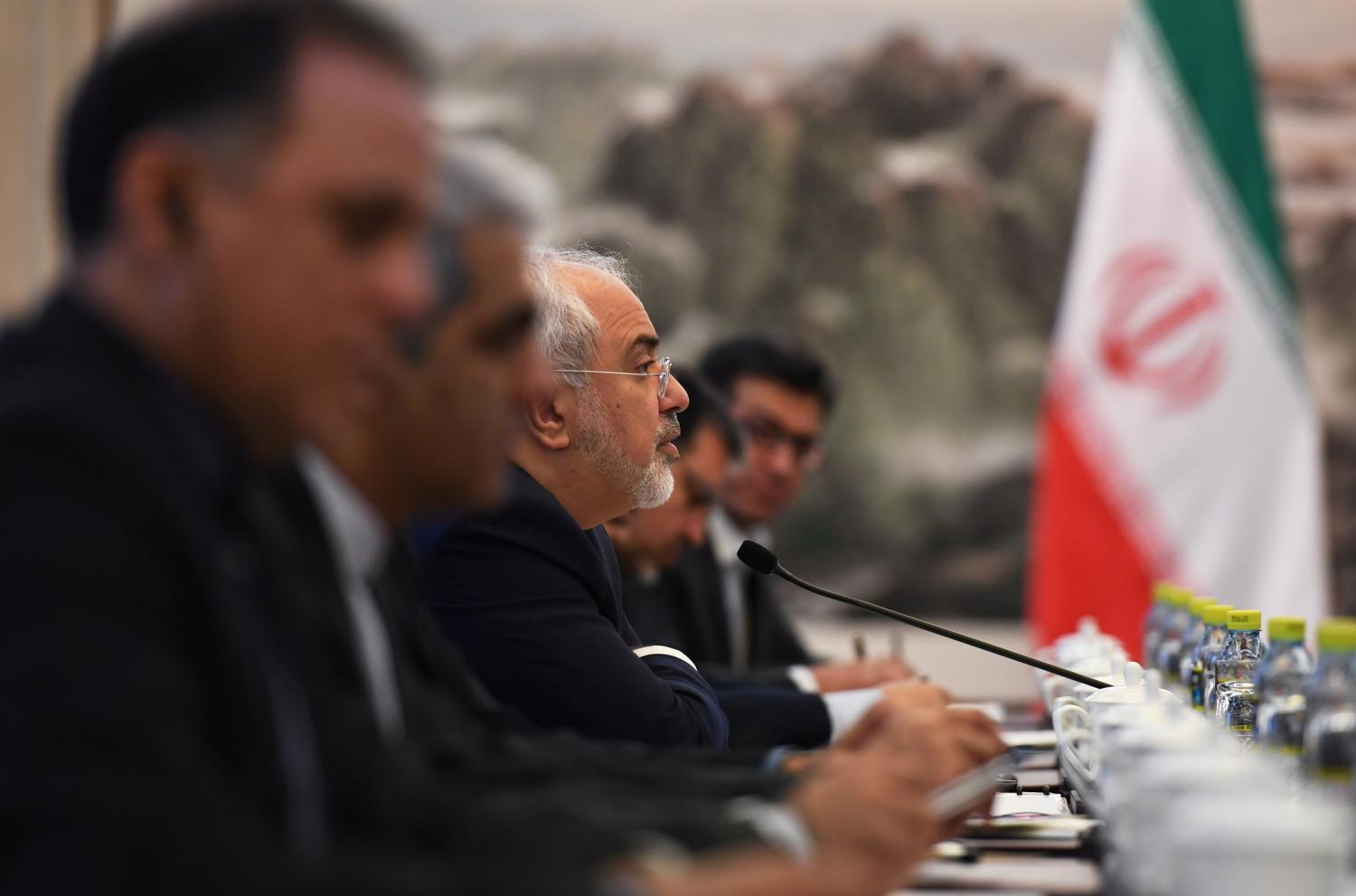
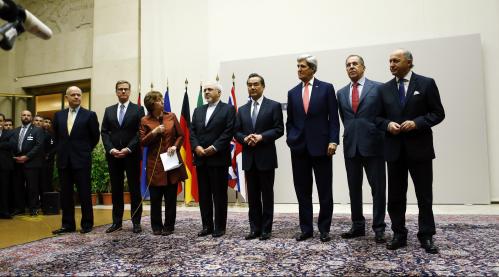
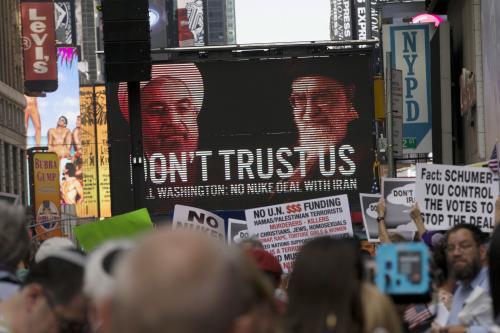
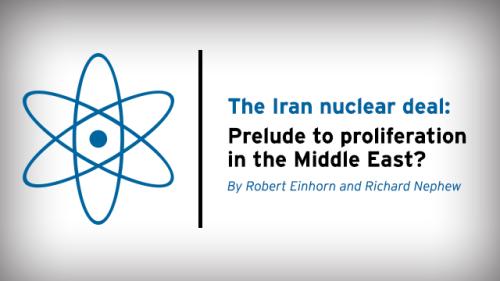





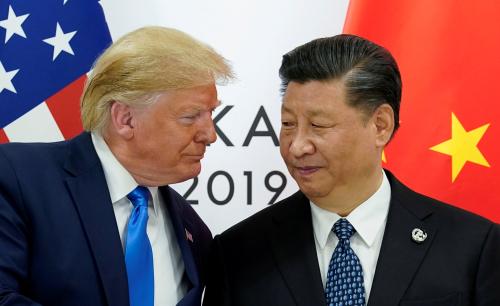
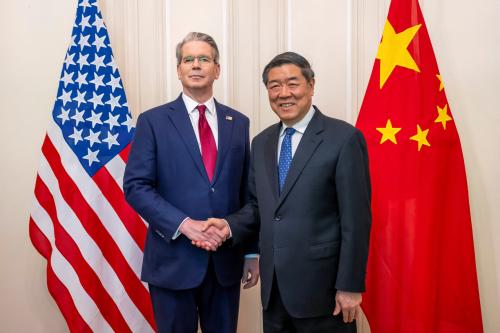
Commentary
A major milestone for the Iran nuclear deal—but a bumpy road ahead
January 22, 2016